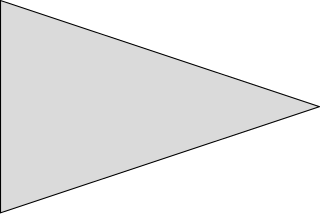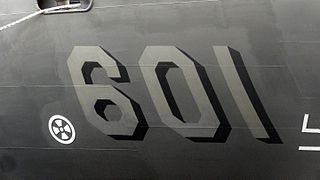| Look up pendant or Pedant in Wiktionary, the free dictionary. |
A pendant is a piece of jewellery.
Contents
Pendant may also refer to:
| Look up pendant or Pedant in Wiktionary, the free dictionary. |
A pendant is a piece of jewellery.
Pendant may also refer to:

An aircraft carrier is a warship that serves as a seagoing airbase, equipped with a full-length flight deck and facilities for carrying, arming, deploying, and recovering aircraft. Typically, it is the capital ship of a fleet, as it allows a naval force to project air power worldwide without depending on local bases for staging aircraft operations. Carriers have evolved since their inception in the early twentieth century from wooden vessels used to deploy balloons to nuclear-powered warships that carry numerous fighters, strike aircraft, helicopters, and other types of aircraft. While heavier aircraft such as fixed-wing gunships and bombers have been launched from aircraft carriers, it is currently not possible to land them. By its diplomatic and tactical power, its mobility, its autonomy and the variety of its means, the aircraft carrier is often the centerpiece of modern combat fleets. Tactically or even strategically, it replaced the battleship in the role of flagship of a fleet. One of its great advantages is that, by sailing in international waters, it does not interfere with any territorial sovereignty and thus obviates the need for overflight authorizations from third-party countries, reduces the times and transit distances of aircraft and therefore significantly increase the time of availability on the combat zone.

The Royal Navy (RN) is the United Kingdom's naval warfare force. Although warships were used by English and Scottish kings from the early medieval period, the first major maritime engagements were fought in the Hundred Years' War against France. The modern Royal Navy traces its origins to the early 16th century; the oldest of the UK's armed services, it is consequently known as the Senior Service.
Ship commissioning is the act or ceremony of placing a ship in active service and may be regarded as a particular application of the general concepts and practices of project commissioning. The term is most commonly applied to placing a warship in active duty with its country's military forces. The ceremonies involved are often rooted in centuries-old naval tradition.
Pennant may refer to:

The several branches of the United States Armed Forces are represented by flags. Within the U.S. military, various flags fly on various occasions, and on various ships, bases, camps, and military academies.

A maritime flag is a flag designated for use on ships, boats, and other watercraft. Naval flags are considered important at sea and the rules and regulations for the flying of flags are strictly enforced. The flag flown is related to the country of registration: so much so that the word "flag" is often used symbolically as a synonym for "country of registration".

HMS Bristol (D23) was a Type 82 destroyer, the only vessel of her class to be built for the Royal Navy. Bristol was intended to be the first of a class of large destroyers to escort the CVA-01 aircraft carriers projected to come into service in the early 1970s but the rest of the class and the CVA-01 carriers were cancelled as a result of the 1966 Defence White Paper which cut defence spending.

The commissioning pennant is a pennant flown from the masthead of a warship. The history of flying a commissioning pennant dates back to the days of chivalry with their trail pendants being flown from the mastheads of ships they commanded. Today, the commissioning pennants are hoisted on the day of commissioning and not struck until they are decommissioned. Some navies have a custom of flying a "paying off" or "decommissioning pennant," the length of which often reflects the length of service of the warship.
This is a glossary of nautical terms; some remain current, while many date from the 17th to 19th centuries. See also Wiktionary's nautical terms, Category:Nautical terms, and Nautical metaphors in English. See the Further reading section for additional words and references.
The names of commissioned ships of the United States Navy all start with USS, for United States Ship. Non-commissioned, primarily civilian-manned vessels of the U.S. Navy under the Military Sealift Command have names that begin with USNS, standing for United States Naval Ship. A letter-based hull classification symbol is used to designate a vessel's type. The names of ships are selected by the Secretary of the Navy. The names are those of states, cities, towns, important persons, important locations, famous battles, fish, and ideals. Usually, different types of ships have names originated from different types of sources.

A pennon or pennant is a flag that is larger at the hoist than at the fly. It can have several shapes, such as triangular, tapering or triangular swallowtail.

In the Royal Navy and other navies of Europe and the Commonwealth of Nations, ships are identified by pennant number. Historically, naval ships flew a flag that identified a flotilla or type of vessel. For example, the Royal Navy used a red burgee for torpedo boats and a pennant with an H for torpedo boat destroyers. Adding a number to the type-identifying flag uniquely identified each ship.

The jack of the United States is a maritime flag representing U.S. nationality, flown on the jackstaff in the bow of U.S. vessels that are moored or anchored. The U.S. Navy is a prime user of jacks for its warships and auxiliaries, but they are also used by non-naval vessels such as ships of the U.S. Coast Guard, the predominantly civilian-crewed replenishment and support ships of the U.S. Navy's Military Sealift Command, the ships of the National Oceanic and Atmospheric Administration, and other U.S. governmental entities. The jack is flown on the bow (front) of a ship and the ensign is flown on the stern (rear) of a ship when anchored or moored. Once under way, the ensign is flown from the main mast and the jack is lowered, removed, and stowed away for future use.

The flag of the United States Navy consists of the seal of the U.S. Department of the Navy in the center, above a yellow scroll inscribed "United States Navy" in dark blue letters, against a dark blue background.

A French ensign is the flag flown at sea to identify a vessel as French. Several such ensigns have existed over the years as well as terrestrial flags based on the ensign motif.

A broad pennant is a triangular swallow-tailed naval pennant flown from the masthead of a warship afloat or a naval headquarters ashore to indicate the presence of either:

The Type 908 replenishment ship is a class of multi-product replenishment oilers commissioned into the People's Liberation Army Navy and the Royal Thai Navy. The first Type 908 replenishment ship, Qinghaihu, was originally laid down for the Soviet Navy as a Komandarn Fedko-class merchant tanker, but construction was halted due to insufficient funds. The ship was then purchased by China as an incomplete vessel in 1993 from post-Soviet Ukraine. The ship has a near sister ship (INS Jyoti) operating with the Indian Navy. After significant refit, the ship was consecutively renamed Qinghaihu (885), formerly ex Nancang and ex-Vladimir Peregudov. Another similar ship was built and sold to Thailand and currently in service with the Royal Thai Navy as HTMS Similan (871).
The Military ranks of Turkey are the military insignia used by the Turkish Armed Forces.